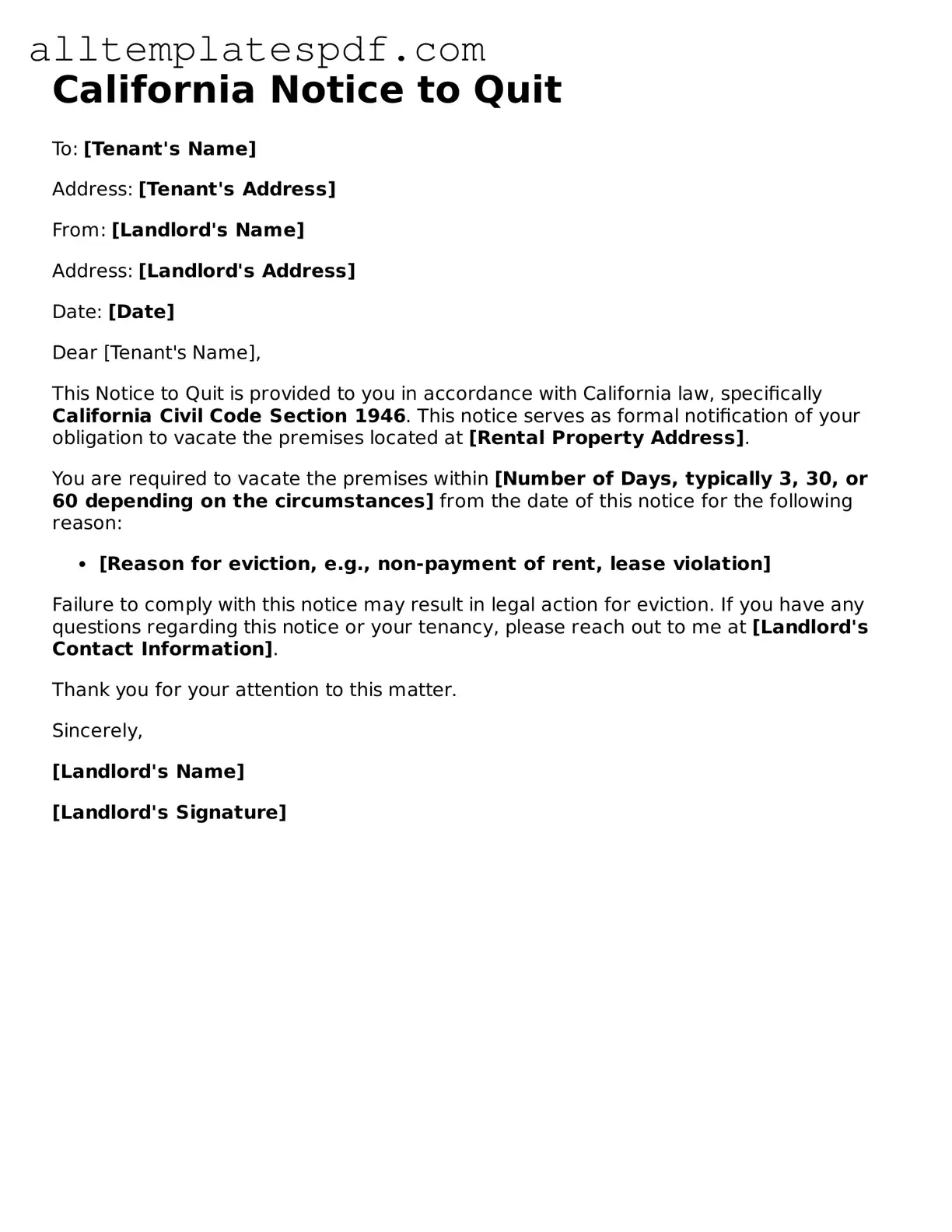Filling out the California Notice to Quit form can be a straightforward process, but many individuals make common mistakes that can lead to complications. One frequent error is failing to provide accurate tenant information. It is crucial to include the full names of all tenants living at the property. Omitting a tenant's name can result in legal challenges later on.
Another mistake involves incorrect dates. The Notice to Quit must clearly state the date by which the tenant must vacate the premises. If this date is unclear or inaccurately calculated, it may render the notice ineffective. Additionally, some individuals forget to specify the reason for the eviction. California law requires that the reason be clearly articulated, whether it is for non-payment of rent or lease violations.
People often neglect to sign the form. A signature is essential for validating the notice. Without it, the document may be considered incomplete. Furthermore, not providing a proper method of service is a common oversight. The notice must be delivered in accordance with California law, which may include personal delivery, posting on the property, or sending via certified mail.
Many individuals also fail to keep a copy of the Notice to Quit for their records. This documentation is vital for future reference and can serve as evidence in court if necessary. Additionally, some people do not take into account the local laws that may affect the eviction process. Local regulations can impose stricter requirements than state law, and failing to comply can jeopardize the eviction.
Another error is using outdated forms. Legal documents can change, and using an old version of the Notice to Quit may lead to complications. It is important to ensure that the most current version is being utilized. Lastly, some individuals do not seek legal advice before proceeding. Consulting with a legal professional can provide clarity and help avoid pitfalls that could arise during the eviction process.
